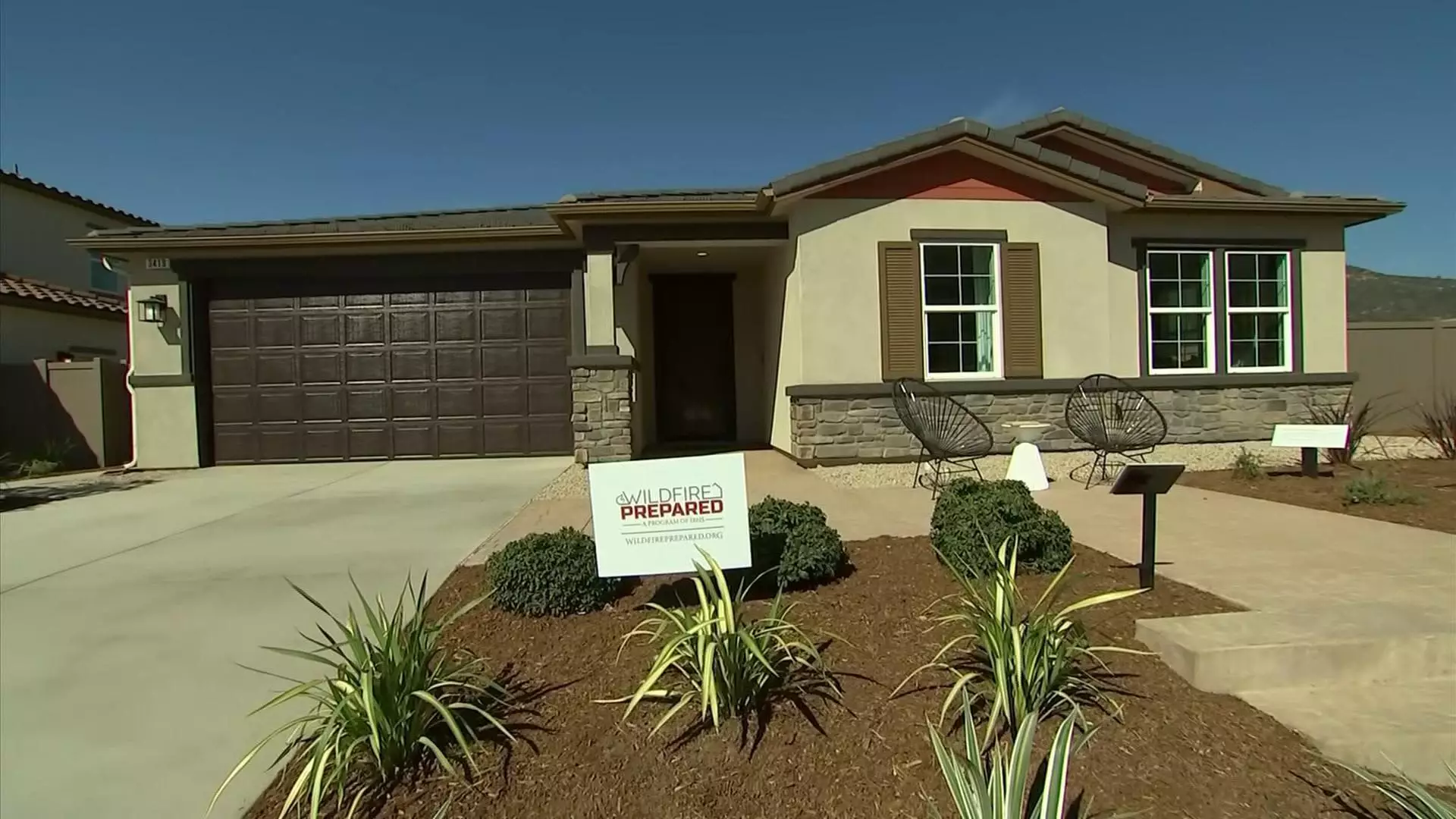In the wake of devastating wildfires that have charred California’s landscape and obliterated countless homes, KB Home has stepped into the fray with an audacious new project: the first wildfire-resilient community in Escondido, a suburb of San Diego. In an era defined by climate chaos, such initiatives may represent a glimmer of hope and an urgent reminder of the necessity for innovation in residential safety. When a single spark can transform lives in minutes, it becomes imperative to rethink our approach to construction and community planning, not just for the present inhabitants but for future generations.
The seismic shifts in California’s climate, exacerbated by climate change, call for a reevaluation of our prevailing building practices. KB Home’s initiative is not merely a response to past tragedies but a proactive measure against potential future calamities—representing a shift towards communities designed with an acute awareness of their environmental context. However, one cannot help but question: is this enough? Are we merely patching the cracks in a failing system while the foundation continues to erode?
Structural Fortification: Beyond Aesthetics
A closer look at KB Home’s offerings reveals a blueprint that merges aesthetics with functionality. The homes boast features such as non-combustible siding, tempered glass windows, and strategically placed defensible space with low-combustible vegetation, making the entirety of the project a living experiment in resilience. It reflects an evolved understanding of how homes interact with their environments; a combination of beauty and pragmatism previously unachievable in conventional residential development.
Nevertheless, while the initial figures—64 single-family homes—might seem commendable, the reality is that the vast majority of homes remain vulnerable. Are these innovations merely a drop in the bucket compared to the impending deluge of climate-related disasters? KB Home’s undertaking is commendable, yet it shines a spotlight on a broader systemic issue: vast swathes of the existing housing stock lack life-saving features. Glaring deficiencies remain in urban planning at large, and the question persists—what about the communities that have not yet been afforded this opportunity?
A Test Bed or a Lifeline?
The Escondido community is dubbed a “test bed,” a phrase that speaks volumes about the ongoing risks and challenges inherent in such an experimental change. This designation implies an element of uncertainty, as KB Home grapples with design modifications and partnerships to fine-tune the business model for future endeavors. This ambiguity underlines that while homes stand resilient on paper, their effectiveness will be truly tested when the flames of a wildfire loom nearby.
The collaboration between KB Home and the Insurance Institute for Business & Home Safety (IBHS) provides a framework upon which to build; yet it raises a crucial ethical consideration: should communities really be built around the concept of “survivability”? Or is that merely indicative of an ongoing failure to address the root causes of such fires? The homes are spaced 10 feet apart, an adjustment designed to slow the progression of flames, but is this a genuine protective mechanism or just a band-aid over a growing wound?
The Insurance Factor: More at Stake than Meets the Eye
In an age where insurance companies are fleeing California like rats from a sinking ship, the question of insurance viability cannot be ignored. Wright of IBHS highlights that it is crucial not only for homes to be survivable, but also insurable. For homeowners standing at the precipice of financial ruin due to skyrocketing insurance premiums, KB Home’s initiative represents a dual-layered hope. Yet, even with enhanced structural protections, these homes remain part of a fragile ecosystem where insurance solutions must evolve simultaneously to ensure affordability and accessibility.
This brings to light the precarious balance between where profit motives intersect with public safety. It’s a delicate dance, but California’s desperate need for reliable housing shouldn’t serve as a crutch for industry profit margins. The encroaching wildfire hazards must catalyze systemic change, not serve as an excuse for exorbitant home prices.
In essence, while KB Home’s wildfire-resilient development embodies hope, it is also a reflection of society’s failure to safeguard its emissaries against the ramifications of climate change. The road ahead will not merely be paved with new constructions but will demand radical shifts in how we think about and plan our shared living spaces. The challenge will be demonstrating that safety can coexist with economic viability, leading us into a resilient future as we confront nature’s increasingly formidable wrath.

